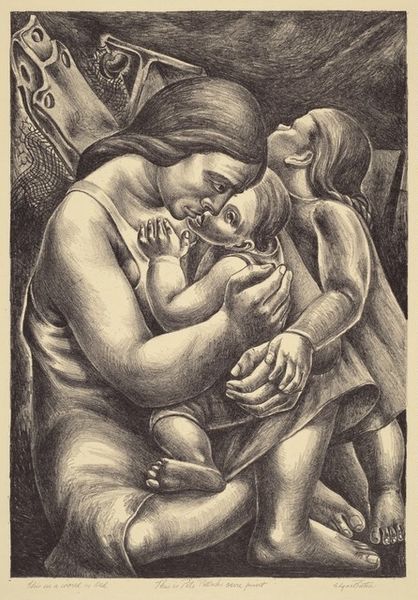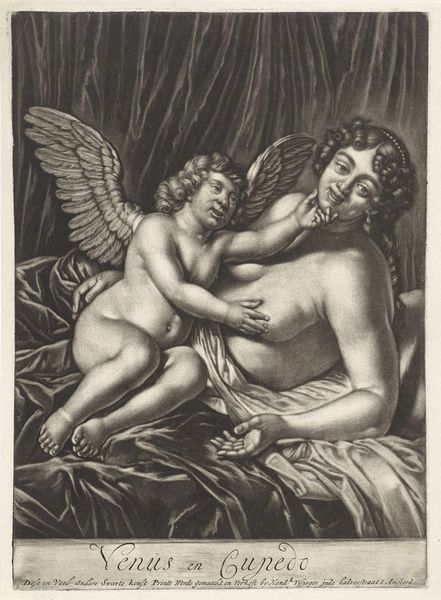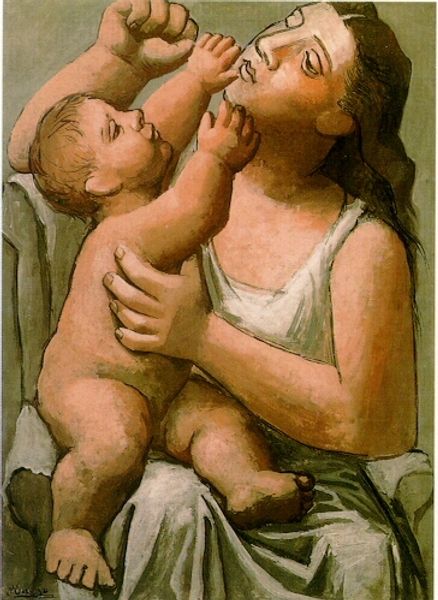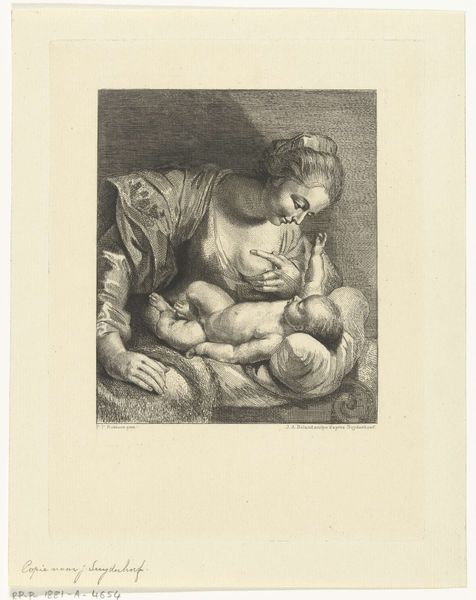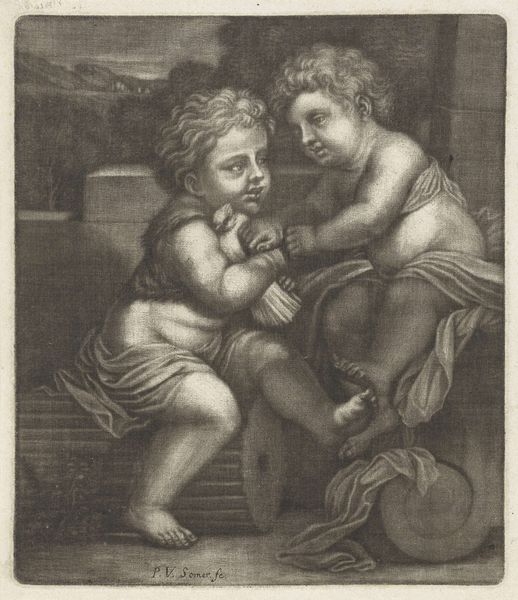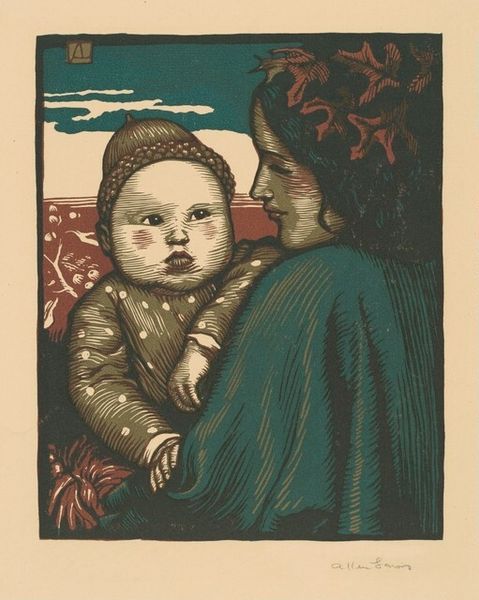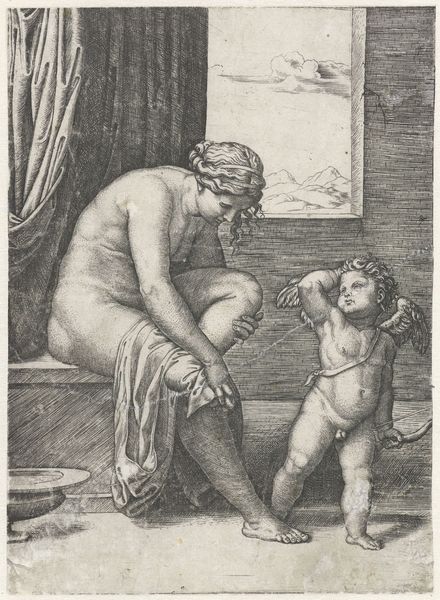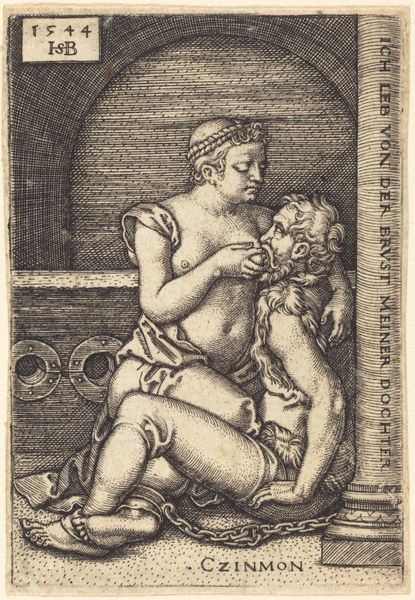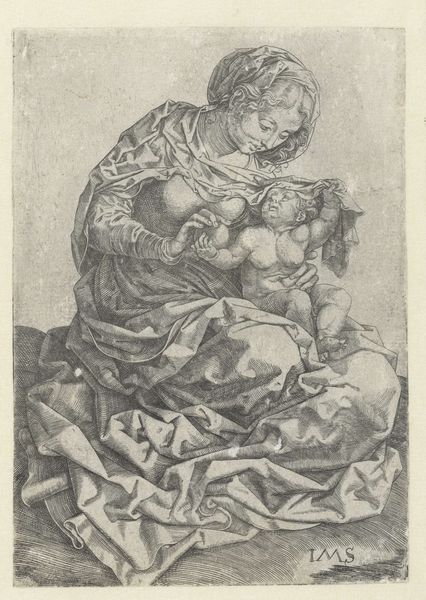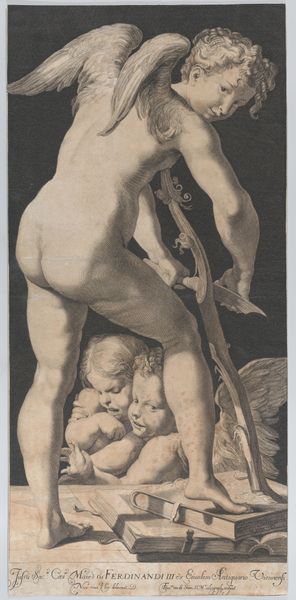
drawing, print, charcoal
#
portrait
#
drawing
# print
#
charcoal drawing
#
portrait drawing
#
charcoal
#
portrait art
#
modernism
#
realism
Dimensions: Image: 325 x 228 mm Sheet: 405 x 290 mm
Copyright: National Gallery of Art: CC0 1.0
Curator: Edgar Britton’s "Mother and Child," likely created around 1939, presents an intimate portrayal using charcoal on paper. What's your first reaction? Editor: Immediately, it’s the texture that grabs me. You can almost feel the weight and softness of the figures. Look at the rough strokes bringing depth and form to the folds of skin on the child’s chubby legs and then compare that to the more gentle strokes used on the mothers skin. The marks showcase an awareness of his material that lends to a sense of raw realism. Curator: Realism certainly is there, and yet the softened, almost dreamlike quality pulls the viewer into an emotional landscape, wouldn't you agree? Considering the context of the late 1930s, as economic hardship persisted, such representations of motherhood offered solace, evoking enduring resilience. This drawing prompts reflections on labor, class and domesticity in pre-war America, doesn't it? Editor: Absolutely. I see the deliberate choices made within the materials, like the dark shading contrasting with lighter areas on their faces. It also reveals so much about how this artist is carefully directing the viewers’ gaze. It’s a really astute strategy that reflects his deep material understanding and careful compositional choices. Curator: Precisely. Furthermore, Britton’s choice of subject situates his work within broader social narratives about the idealized roles of women during the Great Depression. His technique encourages dialogue between traditional representation and evolving modernist idioms. The choice of a humble drawing underscores democratic ideals; he makes poignant imagery accessible. The artwork quietly engages with themes of hardship, care, and dependency during periods of crisis. Editor: Right, the availability and simplicity of the medium of charcoal certainly democratized it as well! One thing I continue to be drawn to are the hands—hers, firmly embracing; his, hesitant near his mouth. They speak volumes, literally carrying much of the image's impact. Curator: Agreed, that quiet exchange encapsulates universal experiences while highlighting the crucial contributions of care workers everywhere. Reflecting upon "Mother and Child," it speaks not just of an individual mother-child dyad, but reminds us to consider their lived reality through complex historical lenses. Editor: For me, it boils down to how Britton made deliberate use of texture and form, making "Mother and Child" so successful and emotionally affecting for contemporary audiences today. I find it such a rich study in labor and emotion.
Comments
No comments
Be the first to comment and join the conversation on the ultimate creative platform.
